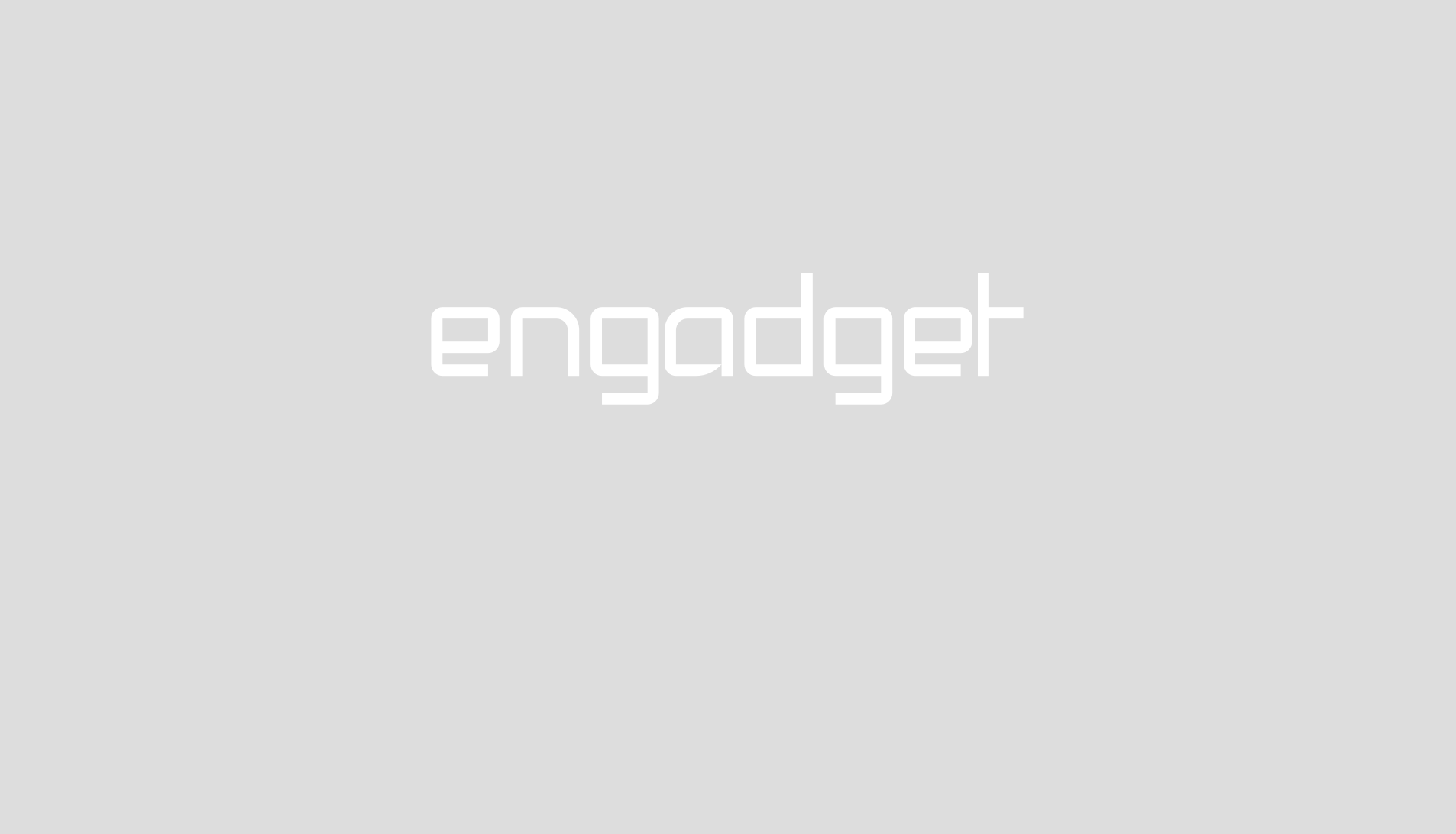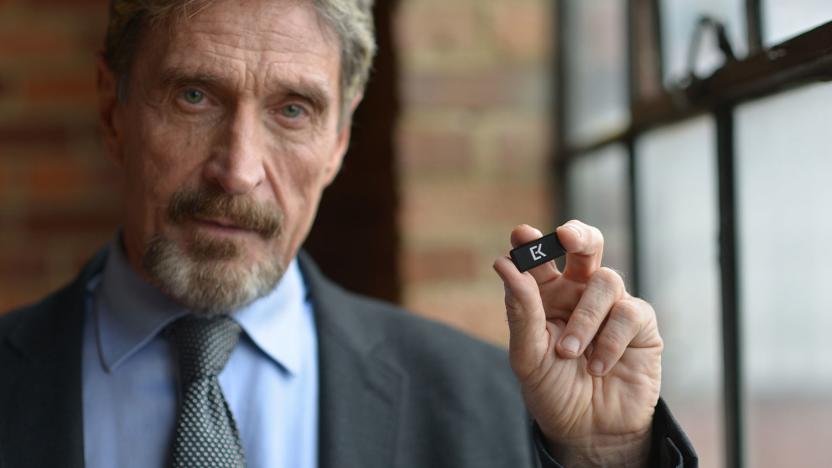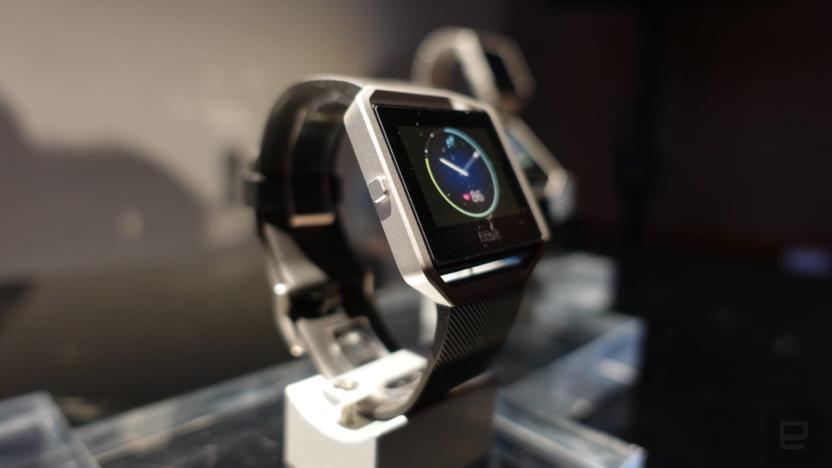ces2016
Latest

Faraday Future could be out of business by February
Last we heard, Faraday Future was going through a rough patch in regards to building its manufacturing facility in Nevada. Now, it appears the electric vehicle company's troubles are worse than anticipated. The key theme, across report from Buzzfeed News, Jalopnik and The Verge is money. Specifically, a lack thereof. Faraday has a heap of unpaid bills, lawsuits from vendors and a landlord in addition to losing senior employees. Owed cash is in the hundreds of millions, and it looks like if the company can't secure more funding after CES next month, Faraday Future will be done for by February.
Timothy J. Seppala12.22.2016
There's a battle brewing over one-wheeled skateboards
At January's Consumer Electronics Show, US Marshals raided and shut down a booth hawking the Trotter, a one-wheeled electric skateboard. Officials were told that the device violated patents owned by Future Motion, makers of the rival OneWheel self-balancing board. Bloomberg, however, is reporting that Future Motion has now withdrawn its infringement lawsuit against the Trotter. It's suggested that the company mislead the courts about the strength of its patents, tricking authorities into taking out a legitimate rival.
Daniel Cooper02.16.2016
The first working Hyperloop could arrive by the end of 2016
Rob Lloyd, the recently minted CEO of Hyperloop Technologies, believes that his firm will have a fully working test loop ready for the end of the year. The executive is here at CES to oversee the breaking ground on the facility, which is being constructed on the outskirts of Las Vegas. If things go according to plan, the two-mile track is expected to be ready for passengers to try out before the end of the holidays. We sat down with Lloyd to talk about the past, present and future of Hyperloop in this wide-ranging interview with Engadget.
Daniel Cooper01.13.2016
Watch Intel's record-setting drone light show
Intel talked a big game when it said that it set a Guinness World Record for the most drones controlled by a single person, but it now has the evidence to back up that braggadocio. Guinness has posted a video of the feat, which saw 100 drones perform a light show (coordinated by Intel software, of course) while humans played Beethoven's Symphony No. 5 on the ground. Is it a publicity stunt? Absolutely. But it's still fun to watch, and it's proof that drone swarms are easier to control than ever.
Jon Fingas01.11.2016
Tracking the Engadget staff's vitals was a terrible mistake
#fivemin-widget-blogsmith-image-164847{display:none;} .cke_show_borders #fivemin-widget-blogsmith-image-164847, #postcontentcontainer #fivemin-widget-blogsmith-image-164847{width:570px;display:block;} try{document.getElementById("fivemin-widget-blogsmith-image-164847").style.display="none";}catch(e){} We challenged eight Engadget staffers to wear a biometric health-tracking shirt for the first few days of CES. In a word, it went terribly. For many of us, it was a struggle to set up a shirt, computer and bluetooth-connected app amid the general stress and distraction of the show. Especially since everyone was also overloaded with work on the first full day of CES coverage.
Kerry Davis01.10.2016
Nikon made CES 2016 worth paying attention to for camera fans
Canon, Olympus, Panasonic and Sony failed to make waves with their latest camera announcements. For the most part, the manufacturers focused on introducing minimal upgrades to existing point-and-shoots and camcorders at CES 2016, since they're likely saving the best for Photokina, in September. Granted, the Consumer Electronics Show is not known as the place for major camera reveals. Last year, for instance, the biggest products came from Sony in the form of 4K-ready Action Cam and Handycam video shooters, which few were excited about. But thanks to Nikon, the 2016 edition of the tech convention wasn't a complete letdown.
Edgar Alvarez01.10.2016
The other CES 2016 trend: Put a screen on it
Wearables, 4K and 8K TVs, connected homes, and self-driving cars may be the mainstream themes dictated by multimillion-dollar corporations. But sometimes a concept pervades all corners of CES, from plucky startups to multinationals. This year: Put a screen on it. Adding a screen to something that usually exists without one seemed to pop up again and again. It's not always a bad idea, but it's nearly always an unusual one.
Mat Smith01.10.2016
The Internet of Things will be more of the same in 2016
Despite analyst expectations that the so-called Internet of Things will generate as much as $1.2 billion in 2016, the Internet of Things appears to be continuing the same shark-jumping trajectory that we saw at last year's CES. Sure, there have been some rather unique and innovative IoT inventions over the past year, but most manufacturers seem to be content with simply slapping a Wi-Fi or Bluetooth radio onto existing products and calling it a mobile revolution. When it comes to crafting a connected home, IoT remains mired in smart light bulbs, net-connected cameras and wireless speakers. You know, the same sorts of bland, iterative use cases we've been seeing since the term was first coined.
Andrew Tarantola01.10.2016
A closer look at CellRobot, the Voltron-like modular bot
When we first heard of CellRobot, a device that can be customized by linking up to 100 separate bots, it seemed like a genuinely cool idea. You could, for example, snap two wheels onto a CellRobot to make it drive around or join several together to crawl on the floor. At the same time, it also felt like the sort of thing that makes a better concept than an actual product.
Devindra Hardawar01.10.2016
Say hello to Panasonic's invisible TV
Often one of the biggest eyesores in an otherwise impeccable living room is the large black expanse of a TV. Panasonic could have a solution for that, however, in the form of transparent displays. The company showed off the tech at CES 2016 in a mock living room: The screen shifts between "transparent mode," where you can see the shelving behind it, and "screen mode," where you can see the screen. And because the display is on a railing, you can move it up and down the shelf for even greater customizability.
Nicole Lee01.10.2016
Intel-powered hard hat could help contractors of the future
A few days ago, Intel CEO Brian Krzanich introduced DAQRI founder Brian Mullins to demonstrate a brand new Intel-powered augmented reality hard hat which looks very much like a Robocop helmet. The helmet has AR vision, so you can easily see how to repair something that's broken thanks to an instructional overlay. At the Intel booth here at CES, I tried on the headgear for myself and was pleased to find that it fit without much fuss and that the thermal imaging worked like a charm.
Nicole Lee01.10.2016
2016 is the year CES became the high-tech auto show
Cars have been a part of CES for a while. But they've always been a bit of an afterthought, pushed to the back corners of the north hall behind the iPhone cases. The last few years though, the automotive industry has undergone a renaissance of innovation. Forget about the drones and Internet of Things. Wheels have become far more important than propellers and expensive light switches. And with all the unveilings and proclamations about the future of transportation it's become crystal clear: CES is officially an auto show.
Roberto Baldwin01.10.2016
Cord cutters can have DVRs with multiroom and placeshifting
Most of the developments in DVRs are for people who still have cable or aren't bothered by paying a monthly fee (see the new TiVo Bolt and Dish Network's new Hopper 3), but what about cord cutters? Three new Funai-built, Magnavox-branded DVRs due out later this year have no subscription fee and aren't built for cable at all: They simply record free TV broadcasts via antenna. Better yet, they can stream those recordings to other boxes in your house and stream or transfer the recording to your mobile device (Android or iOS) for watching on the go.
Richard Lawler01.10.2016
Audi is outfitting its dealers with an impressive VR experience
Some applications of virtual reality were obvious right from the start -- video games immersive VR video experiences were two obvious places to start. But for VR to be something that justifies, say, Facebook's purchase of Oculus VR, the technology would need to expand beyond those realms. At CES this year, Audi showed off an VR vision that now seems like an obvious and smart move: starting in Q2 of this year, select Audi dealers will let you on an HTC Vive or Oculus Rift as part of the buying process.
Nathan Ingraham01.10.2016
Panasonic's smart mirrors gave me a makeover
We've seen Panasonic's smart mirrors before a couple of years ago, when they made over Engadget Managing Editor Dana Wollman into a 1970s space princess. Now the company is at CES 2016 showing off their smart mirror tech yet again, but this time with a couple of differences. One mirror is for skin analysis, while the other is a cosmetics mirror where you can try on all kinds of different makeup looks. As someone who actually cares about such things, I had a go at the two mirrors to see what they had to say about my face.
Nicole Lee01.10.2016
Inhabitat Week in Green: All the EVs at CES, and more!
Want to see the future of transportation? Look to CES 2016, where innovators debuted the state of the art in high-tech mobility. Chevrolet kicked things off by launching the first electric car for the masses, the 2017 Bolt EV. It gets 200 miles per charge and will cost around $30,000. (Check out our interview with GM engineering chief Pam Fletcher here.) Meanwhile, the mysterious startup Faraday Future showcased an insane 1,000-horsepower electric vehicle that looks like a rocket ship and Ehang showcased an autonomous helicopter that can carry you up to 11,000 feet without a pilot. And a Chinese "hoverboard" company made the news when federal marshals raided their booth over copyright concerns.
Inhabitat01.10.2016
Samsung's weird wearables include a smart suit and solar purse
We've already seen some crazy product concepts from Samsung's secret labs, but the company also had a few more unique wearable ideas over at its CES booth. How does a suit equipped with NFC tags sound? Or maybe a purse that charges your phone with solar panels? These particular products were developed by Samsung C&T, another arm of the electronics giant. And unlike the concepts we saw previously, they're already on sale in Korea under Samsung's wearable brand, The Human Fit.
Devindra Hardawar01.10.2016
John McAfee on his new startup and why he should be president
Perhaps the only way John McAfee could surprise us again is by doing something as pedestrian as joining another tech company. These days, he's more known for his love of guns and drugs, not to mention fleeing Belize after getting involved in a murder case. McAfee has since settled in Lexington, Tenn., and he's diving back into the tech world with his incubator Future Tense Central.
Devindra Hardawar01.10.2016
At CES, plenty of companies want to put a Fitbit on your furbabies
#fivemin-widget-blogsmith-image-643481{display:none;} .cke_show_borders #fivemin-widget-blogsmith-image-643481, #postcontentcontainer #fivemin-widget-blogsmith-image-643481{width:570px;display:block;} try{document.getElementById("fivemin-widget-blogsmith-image-643481").style.display="none";}catch(e){}The animal wearable device market isn't going anywhere thanks to the popularity of products like Whistle. Because we're both animal lovers, editor-in-chief Michael Gorman and I hit the show floor to search for the next big furbaby gadget. Whether you believe tech for animals is silly or not, the data collected by trackers and other items is likely to help pet owners learn more about their cat or dog, ultimately leading to healthier and longer lives. And for that, we say pass the bluetooth-connected bowtie.
Kerry Davis01.09.2016
Wearables are inching toward a purpose in 2016
Before CES 2016 began, I was expecting wearable technology to occupy less space on the floor than in 2015. I'd reasoned that the industry's failure to make the devices essential for life would cause it to retreat until the problems were fixed. Quite the opposite has happened, and there are enough wearable companies out there to justify splitting off to fill their own, dedicated event. The usual frustrations are still evident, but smart minds are beginning to craft gear that does one job, and does it well. Right now, nobody has been able to make a wearable that everyone needs, but that's no longer the goal.
Daniel Cooper01.09.2016